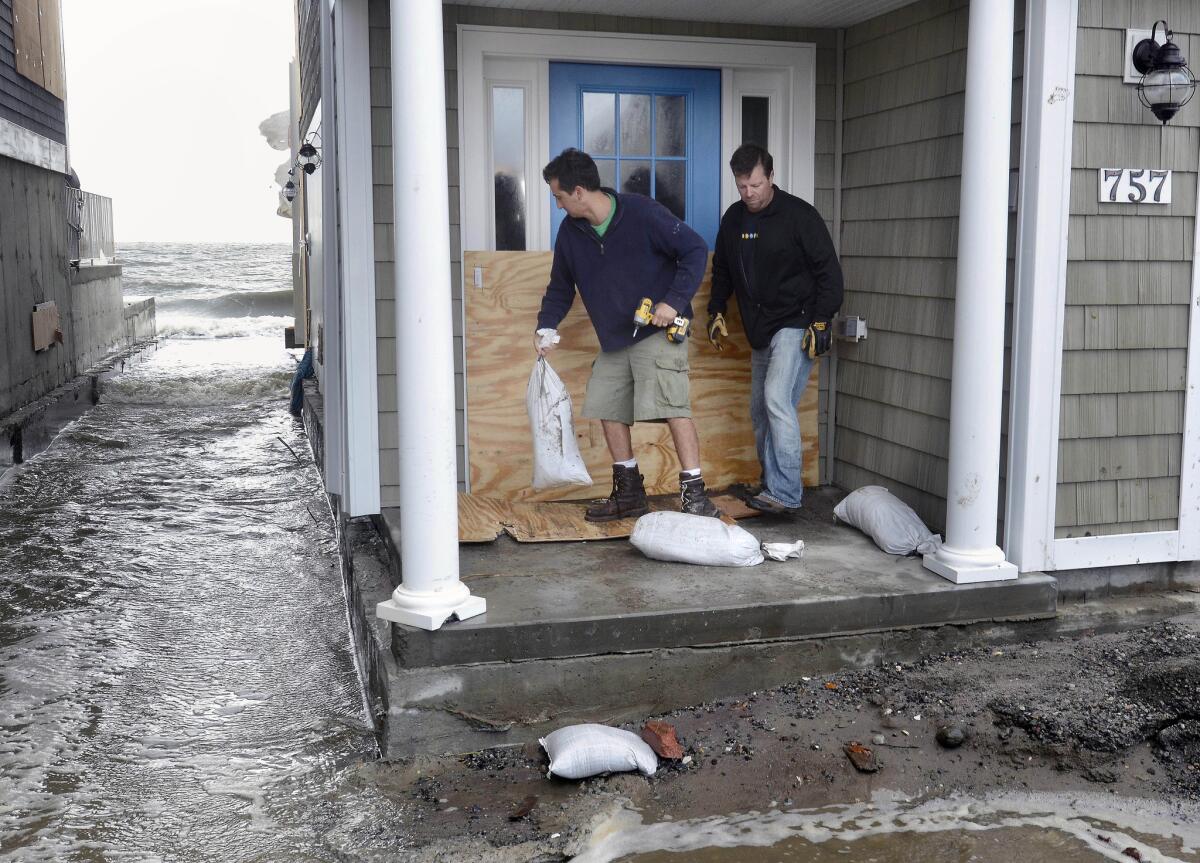Editorial: Want to buy in a flood-prone area and still get insurance? Thank Uncle Sam.

We all — well, most of us — know that global warming means a higher risk of coastal flooding, particularly in low-lying areas susceptible to increasingly intense storm systems. Yet President Obama signed a bill last week that rolls back revisions made two years ago to the National Flood Insurance Program that were designed, in part, to deter people from building or rebuilding in flood-prone areas.
Why the rollback? Politics.
The program, which began in 1968, offered taxpayer subsidies to property owners who were unable to buy private flood insurance because of the higher, and unprofitable, risks their flood-prone properties posed. Designed as a public-private partnership, the program was meant to become self-sustaining over time as insured people paid more and more of their own premiums and municipalities became smarter about limiting developments in flood-prone areas, thus reducing risk. Neither has happened. By July 2013, the program owed the federal government $24 billion it had borrowed to pay claims, a financial gap exacerbated by taxpayer-subsidized premiums for one-quarter of policyholders, combined with massive losses from Hurricane Katrina and Superstorm Sandy. At the same time, at-risk coastal areas and other flood zones have become more crowded.
The Government Accountability Office added the flood insurance program to its annual “high-risk list” of troubled agencies in 2006, and it’s been there ever since. The problems are broad and, at times, arcane, but the bottom line is that this is a program that benefits people who knowingly buy property in areas that stand a good chance of flooding, partially at the expense of the rest of us.
To address some of those problems, Congress approved, and Obama signed, the Biggert-Waters Flood Insurance Reform Act of 2012. Among other fixes, it required updated flood maps expanding the areas for which flood insurance would be required on mortgaged property, and it phased out premium subsidies. But property owners facing big premium hikes or newly required coverage complained to Congress, which obliged with the law Obama signed last week that unravels most of the Biggert-Waters revisions.
Though there is cause for empathy for property owners hit with sudden and significant premium hikes, this is bad policy. The 2012 law was a move in the right direction; the law signed last week reverses it to appease property owners. If they want to live in areas likely to flood — including here in California — that should be their risk to bear, not the taxpayers’.
More to Read
A cure for the common opinion
Get thought-provoking perspectives with our weekly newsletter.
You may occasionally receive promotional content from the Los Angeles Times.






